Generating a Surface Mesh
In the first step, the advancing layer mesher generates a surface mesh from the input surface (provided by the Surface Remesher or Surface Wrapper).
An example of a remeshed surface using
triangles is shown below.
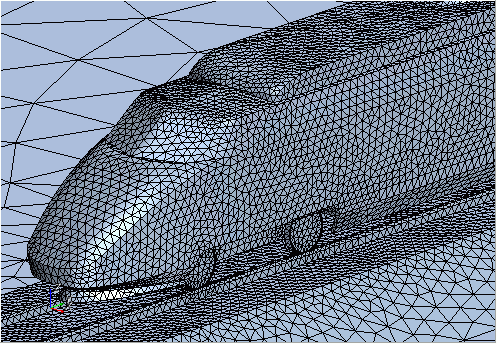

The advancing layer mesher generates the surface mesh either by using the existing triangles/quadrilaterals, or by converting the triangles/quadrilaterals to polygons, depending on the surface element type property that is specified.
| 注 | If the polygonal surfaces that are created contain quality issues such as intersections and face proximity, the advancing layer mesher uses the original triangulated surface mesh on the affected patches. This behavior can cause some boundaries to remain triangular when the surface element type property is set to Polygons. In this situation, the following message appears in the Output window: Warning: initial surface has quality issues. Converted polygon surface will contain triangles. |
An example of a polygon surface mesh is shown below.
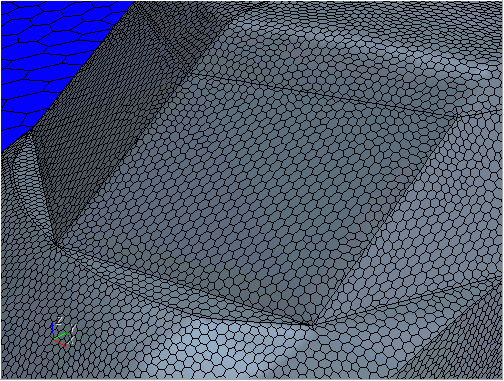

The following screenshots shows two examples
where the quad surfaces do not change when the Surface
Element Type is set to either Input or
Polygon.
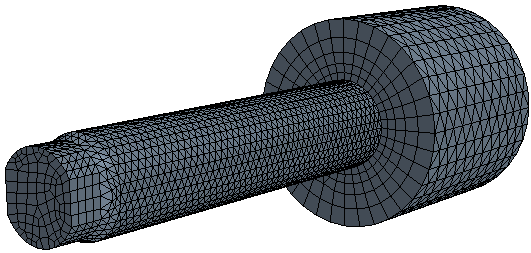
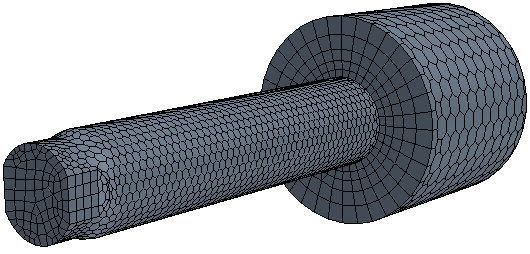


The advancing layer mesher can create a conformal match between cells on either side of a direct or periodic interface. When layers grow from both sides of an interface, a conformal mesh is created. However, to guarantee a conformal mesh when layers are projected on to the interface, layer settings on surfaces that meet at the interface perimeter must be identical. You can choose to deactivate layer growth on the interface itself, as shown in the following image.
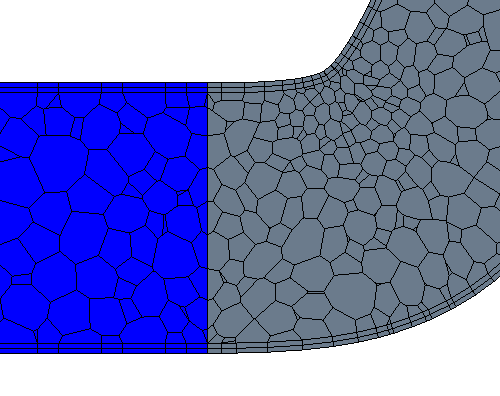

| 注 | To guarantee conformality ensure that the layer settings (thickness, number of layers, and stretching) are all the same. |
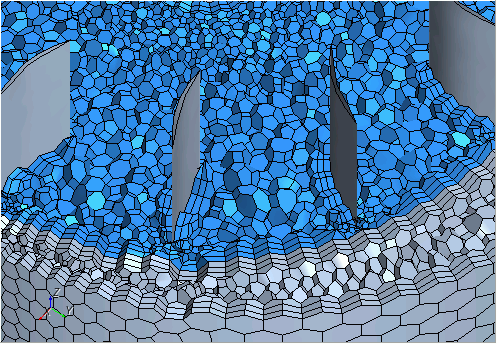
Maintaining the Existing Surface Mesh
If you have an existing triangular/quadrilateral
surface mesh from the Surface Remesher, Surface Wrapper, or third-party software,
you can choose to grow the prismatic cell layers from the existing surface mesh.
This function can be useful, for example, when mapping to third-party codes that
cannot interpolate data from polygonal or tetrahedral cells. An example of prismatic
cell layers that are generated from an existing surface mesh is shown below.


To maintain an existing triangular surface mesh, set the Advancing Layer Mesher property, Surface Element Type to Input.